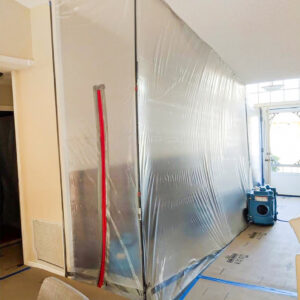If you are looking for services for water mitigation, you must know the process before disaster strikes. Once a water disaster occurs, water mitigation specialists will use powerful equipment to dry the property as quickly as possible. Sub-floor drying systems and wood floor drying systems will help eliminate moisture and restore the building’s normal humidity levels. These techniques also eliminate the risk of warping and rot. In addition, the team will help prevent the growth of mold.

As part of the mitigation process, water damage restoration is essential to restoring your property to its original condition. Depending on the extent of the water damage, the steps of restoration will vary. They may include sanitizing the affected area and applying an antimicrobial solution. Carpets and floors may need to be cleaned, and drywall may need to be patched. Depending on the extent of the water damage, homeowner insurance will cover the costs of water mitigation.
When a water mitigation technician visits your property, they will show you readings of moisture levels inside your home. They will also explain to you what the results of the water mitigation process are. In addition to inspecting your property, they will also use water extraction equipment. In most cases, water mitigation companies will be able to submit your claim to your insurance provider. However, you may be responsible for the deductible yourself. If this is the case, you will likely owe a deductible to the mitigation company.
When it comes to water mitigation, you can often address small leaks yourself if they are not serious. However, if the water is too high, a mitigation company may delay the cleanup until the water levels have decreased. The water mitigation company will assess the damage and arrange for temporary housing until the water level has dropped. If you are in a flood-prone area, water mitigation specialists can help you prepare your home for the equipment required for flood mitigation.
The techniques and products used during water mitigation differ depending on the source of the water. Category 1 water is considered clean and requires little intervention. Category 2 water can result from broken pipes, backed-up sump pumps, and ruptured disposal lines. Category 3 water poses a much bigger challenge and requires specialized products and equipment. Technicians must be trained to handle these types of water while following strict regulations.
Water mitigation is an important first step in the recovery process. It can save valuable belongings, prevent secondary damage, and prevent further property loss. The process also includes structural drying to minimize secondary damages and save valuable contents. During the water mitigation process, it is crucial to remove any debris to clean and disinfect the area. After the water mitigation process is completed, the restoration team will install new flooring and pipes. If the process is not finished immediately, there is a high likelihood of mold growth.
The first step in water damage mitigation is the cleanup of the property. After the flood or other disaster, the property will need to be cleaned up, disinfected, and dried. The next steps of the process include removing damaged or non-salvageable items and sanitizing and deodorizing the structure. Afterward, the property will need to be cleaned to prevent the growth of mold and other fungus infestations.
Depending on the type of water damage, a water mitigation team will begin drying the property. Some materials will dry more quickly than others. Depending on the extent of damage, the drying process can take a week or more. The team will also assess the level of structural damage and determine whether it is safe for residents. If the damage is significant, it may be better to restore than rebuild the entire property. This is why hiring a professional water mitigation team is crucial for homeowners and business owners.
While water mitigation is often considered a separate service from water restoration, most professionals combine both services during the same job. Both types of services focus on reducing the extent of the water damage, minimizing the amount of loss, and preventing future consequences. Mitigation and restoration techniques vary, and each process is essential. You can save money by performing both mitigation and restoration in the same job. You will be amazed at the results! A water mitigation company will ensure your property is restored to pre-damage conditions.
